MARIANI’S
June 11, 2006
NEWSLETTER
Coney Island, Brooklyn NY
UPDATE: To
go to my web site, in which I will update food
&
travel information and help link readers to other first-rate travel
& food sites, click on: home page
ACCESS TO
ARCHIVE: Readers may now access
an
Archive of all past newsletters--each annotated--dating back to July,
2003, by simply clicking on www.johnmariani.com/archive
.
NEW
FEATURE! You may now subscribe anyone you wish
to this newsletter by
clicking here.
In
This Issue
NEW YORK CORNER: Beppe by John Mariani
QUICK BYTES
~~~~~~~~~~~~~~~~~~~~
HOW TO EAT FOOD
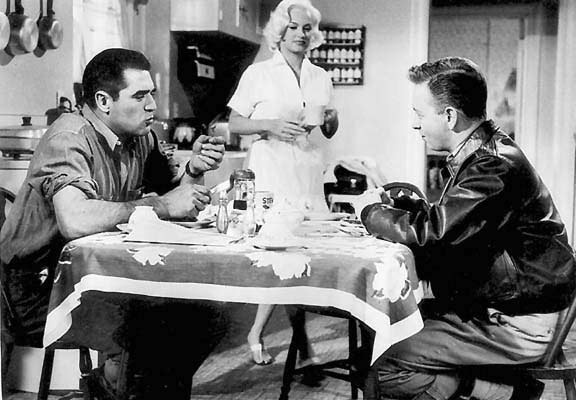
by John Mariani
I eat my peas with honey.
I've done it all my life.
It makes the peas taste funny,
But it keeps them on my knife.
So goes an old ditty that in its own satiric way gets at the heart of table manners. How far does one go to maintain equilibrium at the dinner table? And just how fastidious should one be in one's own country when dining in a restaurant where one is not so sure of the rules of etiquette?
A martini "shaken, not stirred" is an idiosyncratic preference, not a rubric for the perfect martini, but the horror that a host or head waiter may stifle when a guest shows either a complete ignorance or disdain for traditional table etiquette can make even the proudest of men and women shrivel up with childlike shame.
In her book The Rituals of Dinner (1991) culinary anthropologist Margaret Visser wrote that table manners "comprise the ritual movements which each culture chooses as those most appropriate to handle the mightiest of necessities, the most potent of symbols, the medium through which we repeatedly express our relationships with each other." Outsiders are those who do not know--or have not taken the trouble to learn--the table manners of other cultures. But to go out of one's way to learn such manners is to ingratiate oneself with the world, and, most important, to make oneself feel absolutely comfortable at the dinner table.
For those perhaps a bit puzzled by the vagaries of eating unfamiliar foods, here's a tip sheet to make you feel right at home.

Asparagus--Even though the French are aghast at eating most foods with their fingers, asparagus are an odd, glaring exception, although, as Larousse Gastronomique notes, "the tips may be eaten with a fork and the rest of the stem with the fingers."
Bouillabaisse--First of all, it's pronounced "boo-yah-BAYSS," not "bull-yuh-BAIZE." Traditionally the seafood and the soup are served separately, and in
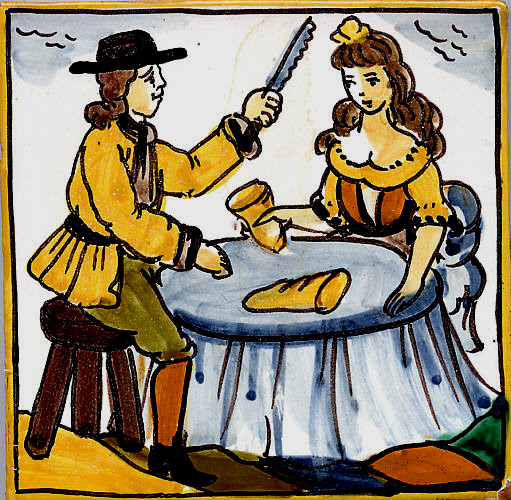
Bread--In
Cassoulet--A well-made cassoulet should have a crisp breadcrumb crust over the pork and beans beneath it, and, depending on whether one is eating a Castelnaudary or a Toulouse-style cassoulet, you tap the crust to break it either seven or eight times, respectively.

Cheese--In
Chinese food--The Chinese have many rituals attached to their food service, but the ones to keep in mind this side of the Pacific are as follows: In banquet service one may take as much from the service plate as one wishes, but one should not take more than one intends to eat. Food should be placed atop the rice, and the rice bowl lifted with the left hand and brought towards the mouth, where the use of chopsticks takes over. Incidentally, in Thai restaurants forks and knives, not chopsticks, are used.
Couscous--Arab etiquette requires clean hands before sitting down to eat, because most Arab foods, including couscous is eaten with the fingers, although in the

Blini--While many Russians pop pancake-like buckwheat blini in their mouths the way Americans do pigs-in-a-blanket, the correct way with a blini is to spread it with melted butter or sour cream--and maybe a litle caviar--and to roll it (traditionally with two forks), then to eat it with knife and fork.
Crayfish--The universal technique for eating crayfish (crawfish in

Dim sum--Chinese restaurants specializing in dim sum roll successive trays of various dim sum to one's table as they come from the kitchen. They are usually three to a plate, and you merely point to the ones you'd like. The bill will be tallied on the number of plates left on your table at meal's end.
Lamb chops--Big loin lamb chops should be eaten with knife and fork, but the smaller riblets may be picked up and eaten with the fingers. In fact, in
Lobster--Assuming one has ordered a whole lobster, one may ask the kitchen to split the tail and crack the claws so as to avoid all the splatter. More important, ask them to clip off the tips of the claws and to drain out the liquid, which cuts down on the messiness of wrestling with the critter at your table. Otherwise, cut down through the tail and remove the meat whole. Use the crackers to crunch through the claws, being careful not to send anything flying towards your tablemates.

Maryland
Olives--What to do with the pit? Carefully remove it from one's mouth with one's fingers (don't expel it into one's hand or napkin) and place it discreetly on your bread plate.

Oysters--Oysters on the half shell may be picked up and slurped down whole, but if you do choose to use a fork, never cut an oyster with a knife.
Pizza--In
Risotto--Should be eaten with a fork, not a spoon. If one needs a spoon, the risotto is too soupy.
Rodizio--A rodizio is one of those huge Brazilian restaurants where you have a grand buffet of appetizers followed by as many as a dozen or more meats brought to your table on a skewer. Ritual requires the waiter to hold the skewer downward as he slices off the meat. One should help with this process by placing one's fork in the slice so that it doesn't fall onto the table. One is provided with some kind of red-and-green token: if one keeps the green side up, the waiter will continue to bring more meats; if you turn up the red side up, he will stop coming. Then you repair to the dessert buffet.
![[]](ATT362900.jpg)
Oriental soups--In Japan,
Sauce spoons--These fairly flat spoons became fashionable at the time when

Snails--Snails, even cooked ones, don't come out of their shells easily and can be messy to hold with your fingers, so the French invented the oyster clamp, which holds them tightly while you dig out the mollusk with a pin.
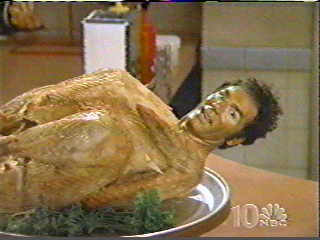
Southern fried chicken--This seems like a no-brainer--one uses one's fingers--but in the South and

Spaghetti--Only in America are spaghetti dishes served with a big spoon on the side, against which to twirl the pasta strands, perhaps because spaghetti is so often over cooked and slippery in this country. Italians take a small amount of al dente spaghetti and twirl it just with a fork, never the spoon, which takes about five minutes of practice to get right.
Sushi and sashimi--Sushi, which comprises the various forms of fish wrapped with nori seaweed or set atop vinegared rice, may be eaten either with the fingers or with chopsticks. Either way, one dips it into the soy sauce (which you may spike with a little wasabi horseradish to your taste) with the fish side down so that the rice doesn't fall apart. Ideally one should pop the whole morsel in one's mouth, but if one can't handle the whole of it, try to finish the rest off quickly and do not place it back on your tray. With sushi, which is simply sliced raw fish, chopsticks are requisite.

Tamales--President Gerald Ford embarrassed himself--yet again--by visiting a Tex-Mex restaurant and trying to stuff the whole tamale, husk and all, in his mouth. What he should have done was to open up the inedible corn husk, and remove the filling forkful by forkful. But then, he's from
NEW YORK CORNER
Beppe
45 East 22nd Street
212-982-8422
www.beppenyc.com
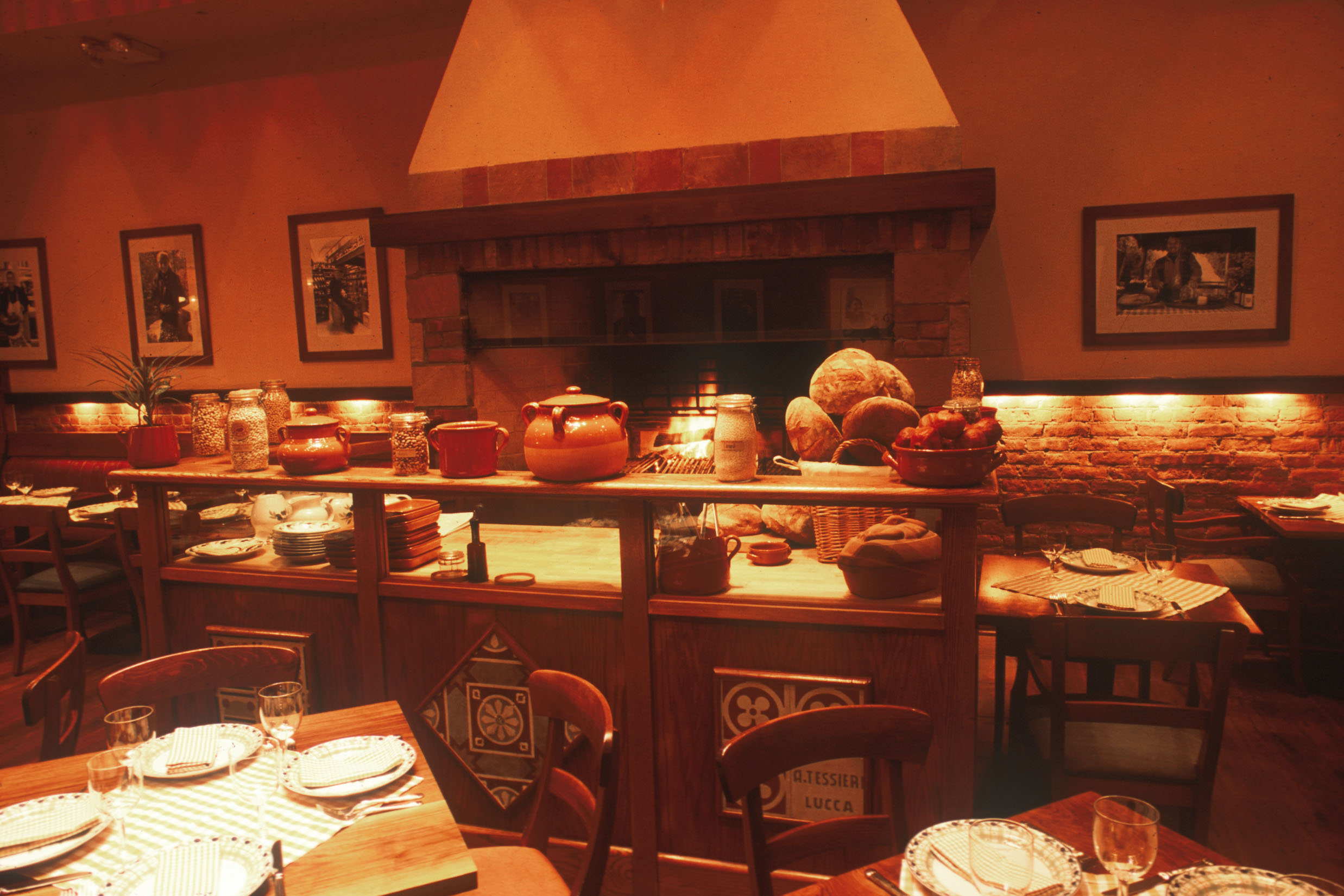 It is never easy for a restaurant created
around the persona
of a well-known chef to lose that chef. In the case of Beppe, Chef-partner Cesare Casella
had built a formidable reputation in NYC as the city's premier Tuscan
chef and upon opening Beppe in 2001; he even named it after his own
grandfather.
It is never easy for a restaurant created
around the persona
of a well-known chef to lose that chef. In the case of Beppe, Chef-partner Cesare Casella
had built a formidable reputation in NYC as the city's premier Tuscan
chef and upon opening Beppe in 2001; he even named it after his own
grandfather.Casella had made his rep first at Coco Pazzo in 1993, then at Il Toscanaccio, along the way writing Diary of a Tuscan Chef and Italian Cooking for Dummies. Beppe thrived in this Gramercy Square neighborhood, and last year Casella went across town to open the delightful Maremma on West 10th Street (for a review click). For reasons I know nothing of, he decided to leave Beppe a few months later, leaving the restaurant to be run by his partner Gerald Lieblich and Chef Marc Taxiera.
So what's changed? Not very much, Grazie Dio! The Tuscan farmhouse look of the place, with its terracotta tiled roof, antique barn-wood flooring, and fireplace is still intact, and the menu is much the same, focusing on Tuscan cookery with a good deal of other dishes well worth savoring. True, you no longer get to see Casella bounding from his kitchen, signature sprig of rosemary in his chef's pocket, and that was indeed a large part of the personality of Beppe. But manager Tom Piscitello and Taxiera are keeping the spirit of the place going without a bump, and my recent meal here was as fine as any I'd had in the past. The food is hearty, lusty, and deeply flavorful, from antipasti to dolci. The winelist is very solid, with plenty of unusual estates at good value throughout, along with the big names in Italian wine.
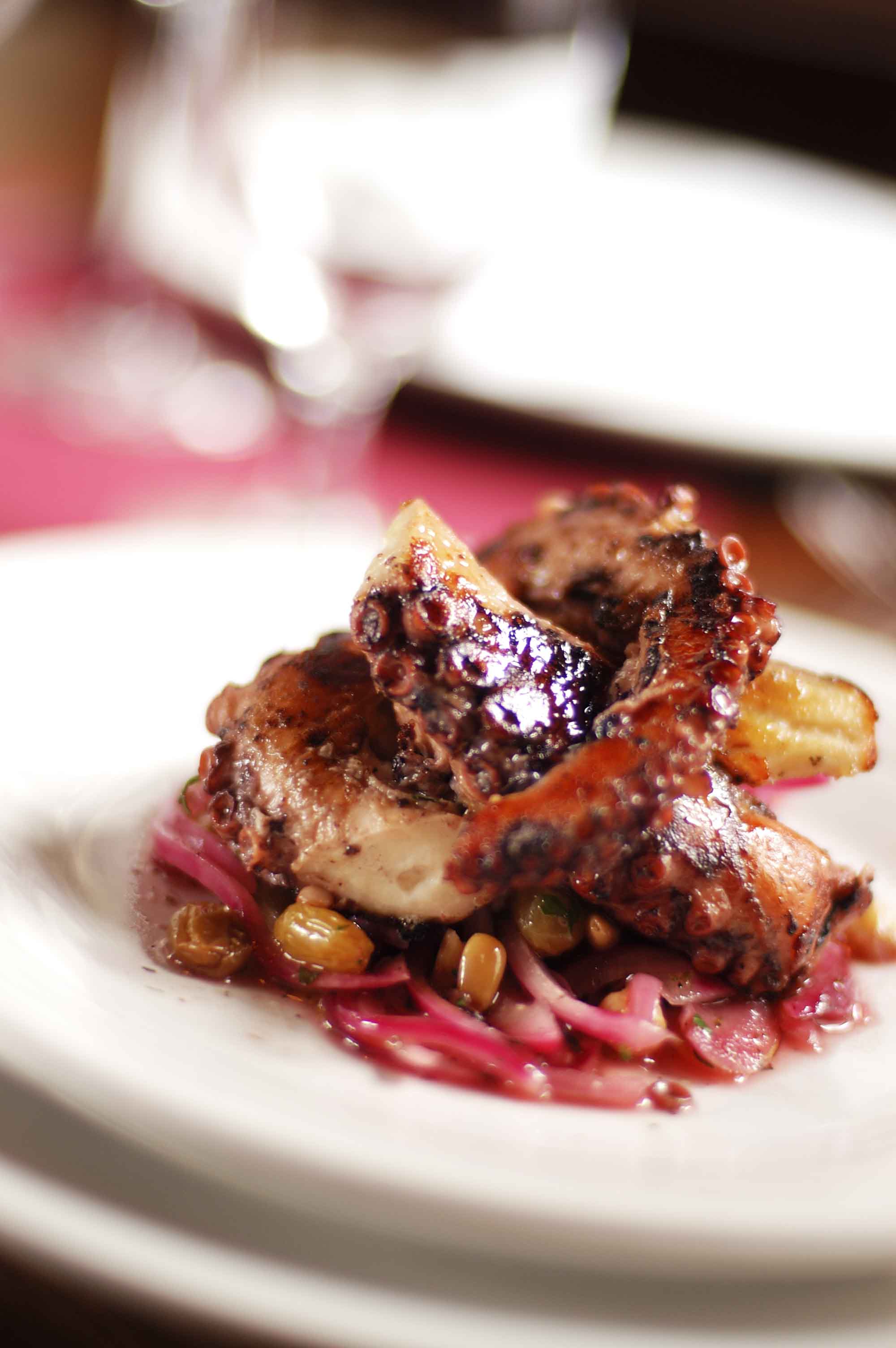
A dinner two weeks ago was a delight, beginning with antipasti that included crisply fried bianchetti (whitefish) mixed with fresh herbs, and a tasting of fried zucchini flowers and zucchini salad. Little on this menu will be found at other Italian ristoranti in NYC, like Taxiera's poached, sliced breast of capon with a balsamic vinegar sauce. Tender grilled octopus (right) is served with red onion, pignoli, and a raisin salad. So, too, pastas rise well above the standard issue: Spaghetti with crumbled pork, garlic, rosemary and tomato, simmered in Chianti--alla norcino ("butcher's style")--was hefty and good, while hand-cut pinci infused with Parmigiano was served with summer's fava beans, spring onions, guanciale, mint, and assertive pecorino. Farrotto--a grain that sustained the Roman legions--can be very bland on its own, but at Beppe, cuddled with spring vegetables, it took on all kinds of flavors. The night we visited we were lucky a special was a platter of morels stuffed with potato and bacon, then fried lightly to make them crisp.
If you want seafood, by all means have the juicy pan-seared rombo (turbot) with simple micro-greens and the spark of preserved lemons. But the heart and soul of Tuscan cooking is in its lusty meat dishes, like rabbit strüdel with the flavor of curry and chickpeas, or succulent pork ribs that have been marinated with rosemary and garlic, then roasted and afterwards grilled to give them additional flavor-- a really gutsy, wonderful dish. Quite interesting for an Italian restaurant was a stewed lamb shepherd's pie with grilled lamb tenderloin. And don't forget to order the Tuscan fried potatoes doused with fresh herbs. If you have room for dessert, keep it on the simple side.
I'm happy to know that Beppe is still doing well and doing what it does so well. It's always been one of those places you go to for the unusual, the regional, and a style of Italian cooking you won't easily find elsewhere.
Beppe is open for lunch Mon.-Fri. and for dinner Mon.-Sat.
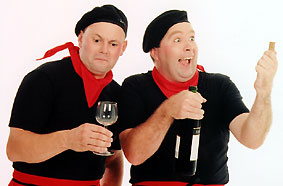
Ahoy, Great Fish, You Are My Friend---AAAAAAGH!

QUICK BYTES
* On June 20 the wines of Jarvis Winery will be featured at a 5-course dinner at Ortolan in
* On June 24 a QBQ BBQ Beach Burger Bash will be held at
* Throughout the month of July, Michael “Buzzy” O’Keeffe, owner of the River Café in Brooklyn, will celebrate the restaurant's 30th Anniversary with a special menu prepared by its current and former chefs, incl. Larry Forgione, Charlie Palmer, David Burke, Rick Laakkonen and Brad Steelman, each preparing a signature dish from his days at the Café. Wine Director Joe DeLissio will pair wines with each course. River Cafe pastry chef alumni -- Dan Budd, Richard Leach, Ellen Sternau and Karen McGrath -- will re-create signature desserts. Call 718-522-5200.
"THE SWEET LIFE" CRUISE
 cooking demos by John and Galina Mariani
co-authors of The Italian-American
Cookbook), optional shore excursions will include a
tour of the Amalfi Coast,
dinner at the great Don Alfonso 1890 (2 Michelin stars), a private tour
of the Vatican, dinner at La Pergola (3 Michelin stars) in Rome, a
Night Cruise to Hotel de Paris and dinner at Louis XV (3 Michelin
stars)
in Monaco, and much more. Rates (a 20% savings) range from $4,411
to
$5,771. For complete information click.
cooking demos by John and Galina Mariani
co-authors of The Italian-American
Cookbook), optional shore excursions will include a
tour of the Amalfi Coast,
dinner at the great Don Alfonso 1890 (2 Michelin stars), a private tour
of the Vatican, dinner at La Pergola (3 Michelin stars) in Rome, a
Night Cruise to Hotel de Paris and dinner at Louis XV (3 Michelin
stars)
in Monaco, and much more. Rates (a 20% savings) range from $4,411
to
$5,771. For complete information click.~~~~~~~~~~~~~~~~~~~~~~~~~~~~~~~~~~~~~~~~~~~~~~~~~~~~~~~~~~~~~~~~~~~~~~~~~
MARIANI'S VIRTUAL GOURMET NEWSLETTER is published weekly. Editor/Publisher:
John Mariani. Contributing Writers: Robert Mariani, Naomi
Kooker, Kirsten Skogerson, Edward Brivio, Mort
Hochstein, Suzanne Wright. Contributing
Photographers: Galina Stepanoff-Dargery, Bobby Pirillo. Technical
Advisor: Gerry McLoughlin.
Any of John Mariani's books below
may be ordered from amazon.com by clicking on the cover image.
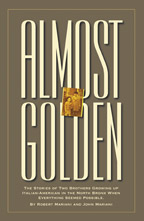 My
newest book, written with my brother Robert Mariani, is a memoir of our
years growing up in the My
newest book, written with my brother Robert Mariani, is a memoir of our
years growing up in the For those of you who don't think of the Robert and I think you'll enjoy this very personal look at our --John Mariani |
 |
 |
 |
 |
 |
 |
copyright John Mariani 2006